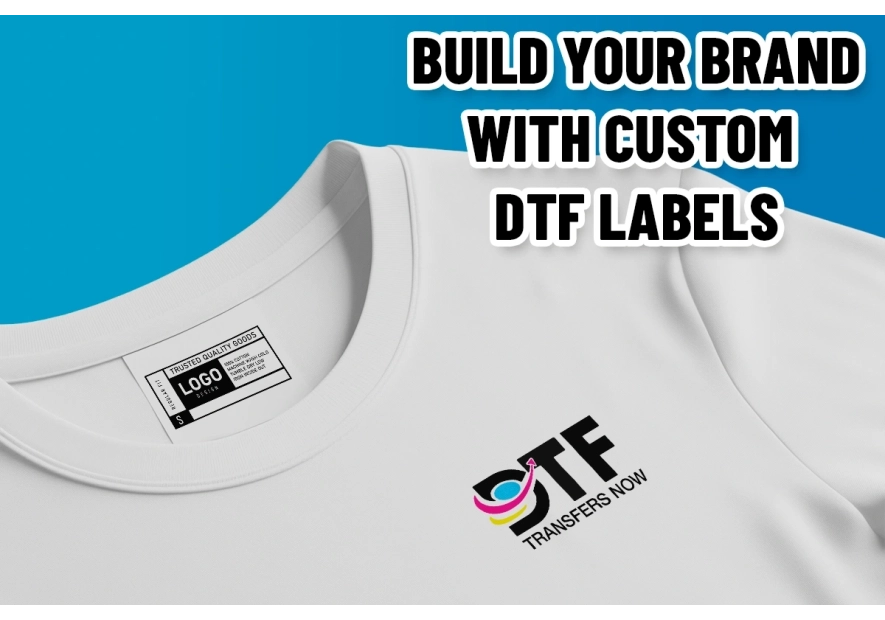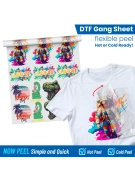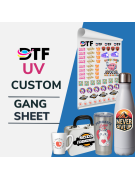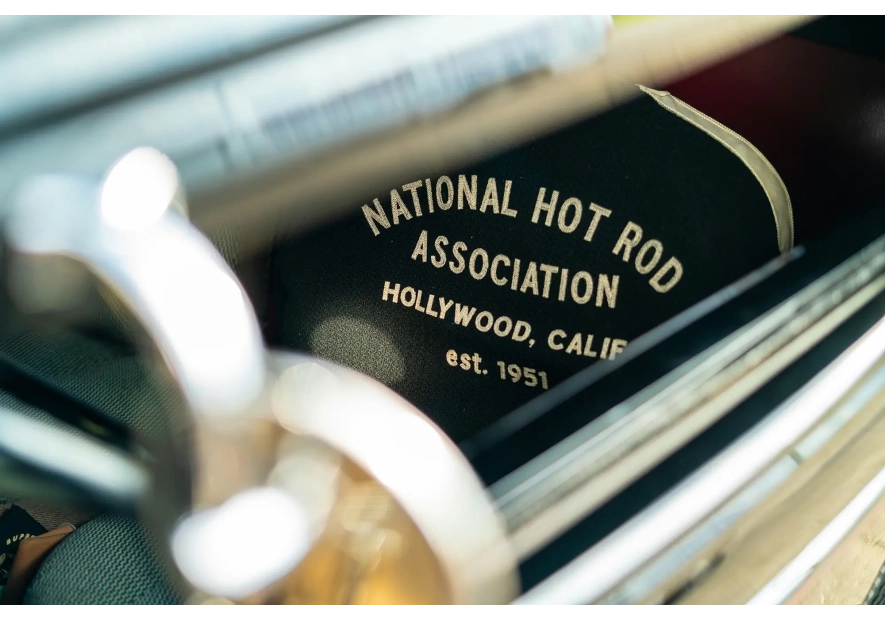Producing Custom Clothing Labels with DTF Transfers for Brand Identity

Producing Custom Clothing Labels with DTF Transfers for Brand Identity
Custom clothing labels are one of the most overlooked tools in brand storytelling.
That tiny square of fabric does more than tell someone how to wash their shirt.
You can build your brand’s identity with it and showcase your quality, aesthetic, and attention to detail.
Whether you’re an indie designer, or a creative trying to make a name in a crowded market, custom clothing labels help you stand out in ways your product alone can’t.
And now, with DTF transfers, creating professional-quality labels has become doable and actually exciting.
So, what exactly is DTF, and why is it changing how we think about labels?
What Are DTF Transfers, and Why Do They Matter?
DTF stands for Direct-to-Film printing.
It is a process that’s shaking up the apparel customization world.
DTF involves printing a full-color design onto a clear film using specialized inks, then applying a heat-activated adhesive powder and curing it.
The transfer is pressed onto fabric with heat and pressure, bonding the ink to the surface.
Here’s where DTF gets really interesting for custom clothing label production:
- No fabric limitations: DTF transfers work on cotton, polyester, blends, fleece, denim, and more.
- Rich detail in small spaces: It can fit all prints cleanly such as logos, QR codes, bold fonts, and even gradients.
- No weeding, no vinyl hassle: Unlike traditional vinyl, there’s no cutting or weeding, and no mess.
- Fast turnaround: DTF is fast. You can design, print, press, and ship without the long wait times screen printing often requires.
- Great for short runs: Whether printing 10 labels or 10,000, you’re not locked into high minimums.
So when it comes to custom clothing labels, DTF isn’t just a good option. It’s a smarter, more scalable one.
The Impact of Custom Clothing Labels on Brand Identity
Custom clothing labels aren’t just practical.
They’re a brand-building opportunity that lives in plain sight.
What Makes a Label “Branded”?
A good label isn’t just your logo slapped on a tag.
It’s thoughtful, well-placed, and aligned with your brand voice.
When these details align, a label becomes part of your customer’s brand experience.
It helps turn a t-shirt into a keepsake, and hoodie into a walking billboard.
Consider these common elements:
- Logo or brand mark: Instantly recognizable and consistent across all garments.
- Color palette: Matching your label’s colors to your overall branding reinforces identity.
- Typography: Font choices matter. Go for playful, bold, elegant, or minimal.
- The tone of voice: Even care instructions can reflect personality. “Wash with love” hits differently than “Machine wash cold.”
Why Custom Labels Build Trust
When people assess a product’s quality, it’s rarely just about the fit or fabric — it’s the little details that make the difference.
A custom clothing label sends a clear message: This piece was made with care.
It shows your customer that thought went into every aspect, not just the design.
For small or emerging brands, that kind of attention to detail goes a long way in building trust and setting you apart.
Brand Consistency Starts Inside the Garment
You’ve probably heard that consistency is key to good branding.
Custom labels help keep that consistency strong, especially when:
- Launching new product lines or seasonal drops
- Collaborating with influencers or artists
- Selling both online and in person
- Packaging your products for retail or wholesale
How to Create Custom Clothing Labels with DTF Transfers
Creating custom clothing labels with DTF transfers is accessible, beginner-friendly, and kind of fun.
Whether you’re doing it yourself or partnering with a service, the process follows a few key steps.
Step 1: Design Your Label
This is your brand’s moment in miniature. Take the time to get your design just right.
Key things to include:
- Brand name or logo: Keep it legible and scalable.
- Size info: S, M, L, XL, etc., or even numeric sizing.
- Care instructions: Icons or short, friendly text (“Machine wash cold, hang dry”).
- Country of origin: Especially important for retail or compliance.
- Optional details: Website URL, QR code, tagline, or social media handle.
It is best practice to design in high resolution (300 DPI), and stick to vector files like SVG or PDF whenever possible.
You’ll get sharper prints, especially for small text or fine lines.
Step 2: Choose the Right Placement and Label Type
Not all labels go in the same place or serve the same purpose.
Popular label placements:
- Inside neck: The classic tag replacement or size label.
- Bottom hem: A subtle, stylish spot often used for streetwear branding.
- Sleeve or cuff: Great for limited-edition designs or collabs.
- Care label patch: For full garment instructions and materials.
You can also create multiple versions of your custom clothing label to suit different placements.
This adds variety while keeping your branding consistent.
Step 3: Order or Print Your DTF Transfers
Now you can turn your design into a usable transfer.
You can order gang sheets from a DTF transfer provider.
It is ideal for clean, press-ready results and cost-effective when printing multiple sizes or designs on a single film sheet.
Or use a printing-house if you’ve got a DTF setup, giving you more control but requiring a bigger upfront investment.
Step 4: Press and Apply the Transfers
With your DTF transfers ready, it's time to press them onto your garments.
Here's the basic pressing process:
- Prep your garment: Smooth out the fabric and pre-press it for 5 seconds to remove moisture.
- Position your label: Use a ruler or placement guide to stay consistent.
-Heat press settings: Most DTF transfers apply at around 290–320°F for 10–15 seconds with medium pressure. Always follow your provider’s instructions.
- Cold peel: Let the transfer cool completely, then peel off the film for a crisp finish.
- Secure it: After peeling, re-press the label for 5 seconds with a Teflon or parchment sheet. This locks in the ink and smooths the surface.
Step 5: Quality Check and Packaging
Finally, check the last few details, like label alignment and adhesion.
Trim any loose threads or edges, fold garments consistently, and add branded packaging or inserts.
Every extra touch reinforces your identity, and that’s what custom clothing labels are all about.
Label Durability: Tips for Long-Lasting DTF Transfers
You can have the best design in the world, but if your custom clothing labels fade, peel, or crack after a few washes, your brand loses credibility.
However, DTF transfers are built to last, if you do a few key things right.
Let’s make sure your labels go the distance.
Use the Right Heat Press Settings
Incorrect temps or pressure are often the silent culprits behind labels that don’t hold up.
- Temperature: Stick to the recommended range (typically 290–320°F). Too cool and the adhesive won’t bond. Too hot and you risk warping the fabric.
- Time: 10 to 15 seconds is usually the sweet spot. Follow your provider’s instructions.
- Pressure: Medium to firm pressure helps the transfer grip the fibers properly.
Tip: Always do a test press on a sample garment before running a full batch.
Cold Peel for a Cleaner Finish
DTF transfers are usually cold peel, meaning you should wait until the label fully cools before removing the carrier film.
This helps the adhesive bond completely to the fabric, preventing premature lifting.
Post-Press for Extra Durability
Once you peel the film, add a quick second press for around 5 seconds using a Teflon sheet or parchment paper.
This step seals the ink, softens the feel, reduces edge lift and adds professional polish.
Educate Your Buyers
If you're selling to customers directly, include wash instructions in your packaging or on your website.
You can even print gentle care tips right onto the label.
Some of the best practices for label longevity are:
- Wash cold
- Turn garments inside out
- Hang dry or tumble low
- Avoid bleach and high-heat drying
Why DTF Transfers Are Ideal for Limited Edition Drops
If you're planning a limited edition collection, DTF transfers are fantastic.
Their flexibility and speed mean you can create small batches without committing to high minimum orders or long lead times.
Want to print a special message inside a holiday hoodie?
Launch a mini capsule with a seasonal label design?
DTF makes that easy and fast.
Plus, each piece still gets that polished, high-quality finish that customers associate with big brands.
It's a perfect way to test new ideas, collaborate with artists, or add collector’s value to your garments, without breaking the bank.
Make Custom Clothing Labels Mean Something with DTF Transfers Now
At the end of the day, custom clothing labels are not just functional.
They are your signature.
Your statement.
And how your customer recognizes and remembers you.
And you don’t need a warehouse or a full production team to make them impactful.
With DTF transfers, you can create labels that are soft, durable, and full of personality, on your terms.
Take your labeling game seriously with DTF Transfers Now.
From user-friendly gang sheet tools to reliable turnaround times, they’ve got the tools to help your brand show up strong on every garment.
Start designing your custom clothing labels today at DTF Transfers Now and make every piece feel truly yours.





Leave a comment